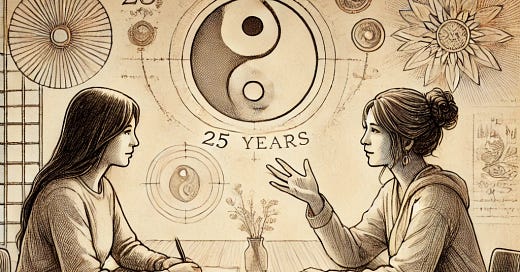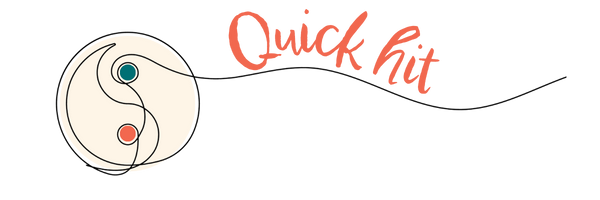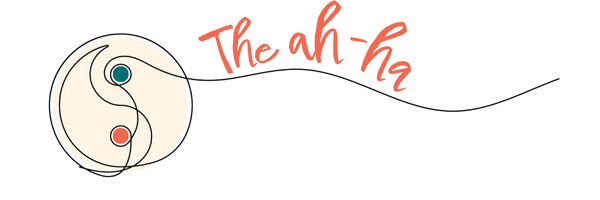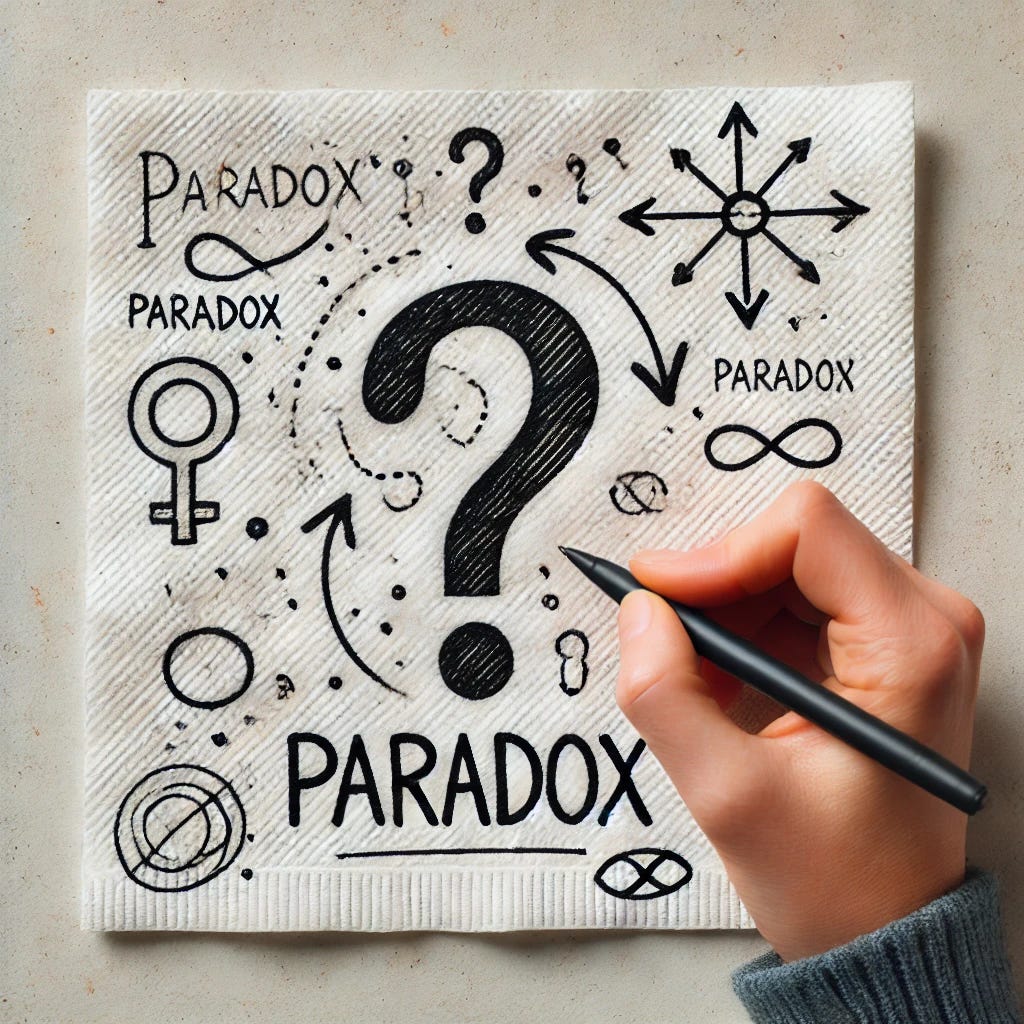The Magic of Work Partnerships
How we found partnership in our work together... and what's next for us
Have you had a great work partnership?
Consider some of the great partnerships over time - Bill Hewlett and David Packard, Oprah Winfrey and Gayle King, Warren Buffett and Charlie Munger, Serena and Venus Williams and beyond.
These work partnerships seem magical. Built on creativity and respect, the partners pushed each other forward, allowing them to individually excel and collectively change the world. Such enduring and impactful relationships are hard to come by, but when they work, they spark creativity, embolden courageous action and improve well-being.
We know! We’ve experienced this in our work together over the past 25 years. We both credit our partnership for our personal successes and our collective advances.
AND….having such a productive partnership makes it hard to let go. Yet we also know that fueling our individual needs can only strengthen the partnership. Sometimes that means taking a step away. Now is a moment for each of us to pursue individual goals. Marianne loves serving as Dean of the Lindner College of Business at the University of Cincinnati, and is focused on applying both/and insights to her leadership and broader needs of academic administration. Wendy will continue to develop and explore both/and thinking in her research as well as her keynotes and workshops. Going forward, Wendy will take over this newsletter, and will be working toward a next book (stay tuned!).
Working together and working separately is not an either/or. We are excited about our individual next steps and by how our resulting learnings will inspire future collaborations.
As we move forward, we took a moment to explore the ingredients of our partnership. Our conversation inspired us, while also inviting tears of gratitude for one another. We hope our reflections inspire other great partnerships.
With hope for more both/and -
"Great individual successes emerge from great workplace partnerships." - Wendy and Marianne"Alone we can do so little; together we can do so much." — Helen Keller"I can do things you cannot, you can do things I cannot; together we can do great things." — Mother TeresaThe Backdrop - A Winter Evening in Cincinnati
It was getting late. We were sitting at Marianne’s kitchen table. The Chinese food we picked up for dinner was getting cold, but the conversation was heating up. Puzzling over insights into paradoxes and their application to leadership and organizations, we worked toward crafting an academic paper. We pushed the food aside, and started drawing images on our napkins that reflected our emerging, collective thinking.
What do we really mean by paradox?
How does this idea draw on ancient wisdom yet feel so novel and vital for contemporary society?
Do paradoxes exist in our world or are they constructed in our minds?
Can we solve paradoxes or are they puzzles that perpetually vex us?
We went back and forth - toggling between excitement and confusion. After several hours, we felt energized by our shared enthusiasm and intellectual curiosity and exhausted by the complexity and ambiguity of our iterations. We arrived at an image and scaffolding that was good enough for Wendy to get started on a ‘crappy first draft’. Marianne reworked it to crystalize our insights while noting any gaps. We continued to pass the draft between us - reading, adding, developing, structuring, editing - until we ended up with a paper good enough to submit for journal review.
That process led us to eventually publish our paper, Toward a Theory of Paradox, in 2011 which went on to win the Academy of Management Review Decade Award for the most cited paper over the prior ten years. The paper joined with key papers among our colleagues to catalyze a conversation about paradox in organizations and leadership. Together these works helped grow a global community of paradox scholars, spawned dozens of scholarly projects, and led us to write our book Both/And Thinking.
For over a quarter decade, we repeated a similar process through multiple projects. We would generate ideas in intense conversations and iteratively write, drawing on our varied skills and fueled by deep, mutual respect. Our partnering has helped us be much more creative and courageous. We each credit the other for much of our professional growth and successes.
We both teared up as we unpacked what it has meant to work together these past 25 years. How did we live into the yin/yang of this partnership? And how do we feel as we start to diverge onto separate paths?
Work partnerships can be challenging. Different goals, competencies and approaches can cause rifts. Egos can get in the way. But when they work, they are magical. Here are some of our lessons.
Pick the right partner - We met in 2000. Wendy was doing her PhD. Marianne, an assistant professor, had recently published a rare paper about paradox, winning the best paper award that year in the Academy of Management Review. Intrigued, Wendy emailed Marianne and asked if they could meet at the next year’s conference. We met. We chatted. We were so excited talking about paradox and its prospects for leaders and organizations that the conversation just flowed. We both left energized, wanting to keep exploring these ideas together.
We continued to be in conversation with one another over ideas and our independent projects for years before we decided to work together. We valued our shared intrigue and appreciation of paradox, as well as our energy for mutual sparring to advance our thinking. These conversations were small steps, but enough to lay the foundation to decide what we would jump into our first big writing project together.
Build mutual respect that honors different skills - As we started to write together, we realized that we had distinct strengths. Wendy was good at the ‘crappy first draft’ - taking our brainstorm of ideas and getting it down on paper. Marianne was good at structuring the ideas and tightening the narrative. We forged a deep, mutual respect for these differences that allowed us to do our best work.
I, Wendy, remember how vulnerable I felt early on to send work to Marianne. My first drafts were always clunky and laborious. Would she judge my writing? Instead, she would just get to work making it better. The more grateful she was for my crappy first draft, the more I could lean into working quickly, getting big ideas down without self-editing. The more I did that, the faster we could improve our ideas.
Early in our collaboration, I, Marianne, was overly cautious. From my theorizing to my writing, I hesitated to ‘go big or go home,’ making me plod too cautiously. I worried that I was painful and embarrassingly slow. I learned to lean into Wendy’s creativity and encouragement to take bigger risks in our ideas and move quickly to keep the energy flowing.
Over time, our mutual respect and gratitude fueled a beautiful, virtuous cycle. Knowing we never had to worry about judgement from the other - we just worked through questions and barriers, pushing one another to be bold and grounded, take risks and find strong support for our arguments.A shared drive for excellence - We didn’t judge each other, but together we did judge our work. We both hold a high bar for scholarly rigor, theoretical novelty and personal authenticity. We also let others judge our work, seeking out ongoing feedback and insights.
Feedback can feel double-edged. Intended to help, it can often feel bruising and destructive. Staying in that emotional hurt for too long can create obstacles. That’s where our partnership would kick in. Building on our mutual respect, we could vulnerably share our ego bruises and emotional rejections with one another. Putting these on the table then ironically gave us the chance to quickly take them off the table, and instead turn to what we could learn from the feedback to improve our insights and approaches.
We took turns being the ‘critical friend’ - each playing the role for the other to hear and validate the challenges, before turning toward thoughtful problem solving and mutual strengthening.
With a partnership like this, it seems crazy to let go. Yet what we know is that supporting one another in our personal ventures has strengthened our collective work.
Over the years, the intensity of our joint work has ebbed and flowed. We spoke several times a week while writing our book. While there were other times when we only connected periodically - like when Marianne was first a Dean in London and Wendy was working on scholarship with others. Even then, we could pick up our partnering so quickly, even if it had been months.
It comes as no surprise to us to be confronting yet another moment of divergence, as we each pursue our own passion projects.
We both look forward to our next phases - to what they will offer each of us individually, for what we’ll be able to achieve collectively. And we fully expect to converge again in the future.
Have you been in a powerful work partnership? We hope these ideas spark ongoing inspiration to find the collaborations that fuel your individual work and make a difference in the world.












I’m practically jealous of your awesome sauce together
You two are both spectacular; together, out of this world! I'm excited to see what happens next for each of you, and how your projects weave together again in the future--great friendships and collaborations are inspiring and joyful to watch! Thank you!